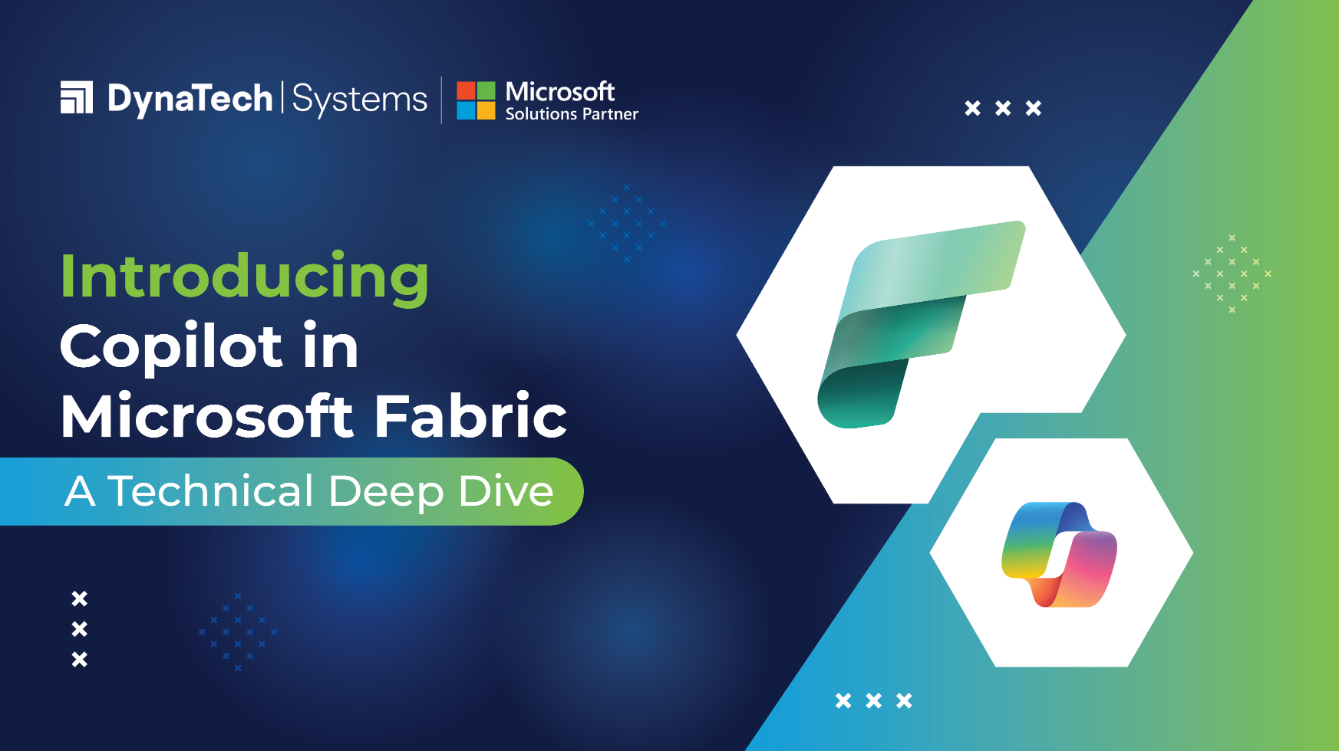Intelligent automation is the newest advancement enterprises seek to automate their processes and boost performance. Microsoft Fabric has emerged as a world-class data platform that takes care of all your data and analytics needs in one place. It seamlessly integrates with Azure services, Power BI, and AI-driven tools. To make it easier, Microsoft has introduced Copilot in Fabric. It is a robust AI assistant specially designed to supercharge workflows and minimize any sort of intervention. It helps you handle your data and analytics better than ever before.
This blog will take a deep technical dive into the aspects of Copilot in Microsoft Fabric, how to enable it in Fabric, and its different capabilities, integration points, and much more.
Microsoft Fabric – A Unified Data Platform
Before moving into Copilot, let’s quickly understand the core of Microsoft Fabric. Fabric is a unifying platform that brings together the best features and capabilities of Azure, Power BI, and Artificial Intelligence. This robust platform integrates data pipelines, data lakes, analytics, and AI into one single platform. Hence, it offers end-to-end data management solutions to businesses of all sizes.
Its core components include:
- Data Factory for ETL (Extract, Transform, Load) processes
- Synapse Analytics for big data analytics
- Power BI for data visualization and reporting
- Azure Data Lake for massive storage of unstructured and semi-structured data
The Role of Copilot in Microsoft Fabric
Microsoft Fabric is an AI-powered assistant. It is embedded into Microsoft Fabric. This integration enables users to handle complex tasks with ease. By implementing advanced ML (Machine Learning) models and NLP (Natural Language Processing), it simplifies the way users interact with Fabric services. Its main functions are:
- Natural Language Querying (NLQ): Copilot is very easy and simple to use as it uses natural language for any kind of query or command. Users need not use SQL or Kusto queries. Instead, they can use the normal English language to transform, retrieve, or analyze the data.
- Data Insights Automation: Copilot has the capability to automatically detect patterns, correlations, and any kind of dataset anomalies. This aids data analysts in creating accurate insights without the need for technical skills.
- Predictive Modeling: Copilot uses Artificial intelligence to create and deploy ML models directly within Microsoft Fabric. This can automate various tasks like data training, preparation, as well as tuning.
- Code Assistance: Copilot is especially helpful for technical users. It can generate snippets of code in Python, SQL, or even Spark. This helps to optimize queries and render highly efficient data pipeline scripts.
- Workflow Automation: Copilot helps to orchestrate data workflows across Microsoft Fabric Services. Hence, it enables organizations to easily set up and manage complex ETL pipelines with minimal or no interruptions.
How to Enable Copilot in Fabric for Everyone
The following steps can help you turn on Copilot for everyone in your organization.
1. Using your admin account details, sign in to Microsoft Fabric.2. Choose Fabric settings. Then, from the menu, select Admin portal.

3. Choose Tenant Settings. Now scroll down toward the end of the page, where you will see the “Copilot and Azure Open AI Service(preview)” option. Turn on Enabled.

4. On the left side, you can see “Capacity Settings”. Select it.
5. Now, select the Fabric Capacity tab.
6. Select Set up a new capacity in Azure option. (This selection will direct you to the Azure where you can set up capacity)

7. You will see Create Fabric Capacity in Azure.
- Choose your Subscription.
- Create or select a resource group.
- Create or select a new capacity name.
- Click on Review + Create.
- Now click on Create.

8. After following the above steps, you will see that your validation succeeded.

9. Now go back to Power BI and click on Workspaces.
10. Create a New workspace.

11. Name it.
12. Click on the Advanced dropdown and then click on Fabric Capacity.
13. Click on Capacity and choose the capacity created in Azure.

14. Click on Apply
Now, Microsoft Fabric Copilot is available.
Bonus: If you want to add new users to a workspace who can use copilot features, here are the steps:
1. Go to the workspace you created.
2. Click on Manage Access.
3. Finally, add users or groups.
Microsoft Fabric Copilot for Power BI
AI-driven automation is a standout feature of Copilot in Power BI. To create detailed dashboards or reports required deep knowledge of the platform and query languages in a traditional method. But with Copilot, your business users who have little or no technical skills can also prepare advanced reports. What’s more?
- Optimize Queries: Copilot ensures that your Power BI dashboards and reports are always optimized for best performance. It suggests and auto-implements query enhancements.
- Engine Recommendation: Copilot has the ability to recommend more metrics or KPIs on the basis of data explored. This enables the users to make better decisions.
Microsoft Fabric Copilot for Data Science and Data Engineering
Data scientists and engineers work on huge sets of data. Building an ML model can be time-consuming and resource-intensive. Here are a few capabilities of Fabric Copilot for Data Science and Data Engineering.
For Data Science
- Automate Data Preparation: Copilot automatically cleans and preprocesses datasets. Hence, it eradicated the need for manual data wrangling. It has the power to identify missing values, or any inconsistencies. It can even suggest encoding or other transformations.
- Build and Train Model: Data scientists can describe the type of model they want to create in their normal natural language. Copilot will then create the model architecture. This can be done in Azure Machine Learning or Synapse Analytics
For Data Engineering
- Automate ETL Pipeline: Copilot helps to set up, manage, and optimize ETL pipelines in Azure Data Factory and Synapse Pipelines. By understanding users’ exact requirements, Copilot can develop workflows that can seamlessly ingest, transform, and store data in Azure Data Lake or SQL Data Warehouse.
- Orchestrate Data: Copilot helps data engineers orchestrate data workflows across multiple services like Azure Data Factory, Databricks, and Synapse Analytics.
Microsoft Fabric Copilot for Data Factory
While managing data workflows, users often need to navigate and perform activities between different services like Azure SQL, Data Lake, Synapse Analytics, and on-premises systems. Copilot aids in:
- Error Handling: When there are issues in data pipelines, Copilot has the feature to automatically detect the issue and attempt recovery.
- Scheduling and Automation: Copilot enables users to automate the scheduling of data pipelines. This can ensure the on-time execution of ETL jobs.

Conclusion
Microsoft Fabric and Copilot reflect an advancement in AI-driven data management and analytics. With advanced automation and insights features in Power BI, Data Science, Data Engineering, and Data Factory, enterprises can transform the way they look at their data. Copilot enables businesses to easily access, analyze, and act on their data while making the most of it. No matter if you are building critical ETL workflows, creating ML models, or wanting dashboards in a single click, Copilot is your extra hand to accelerate your entire process.
Interested in unlocking the full potential of Microsoft Fabric and Copilot for your organization?
Contact DynaTech today for expert solutions in data engineering, analytics, and AI-powered automation.




























